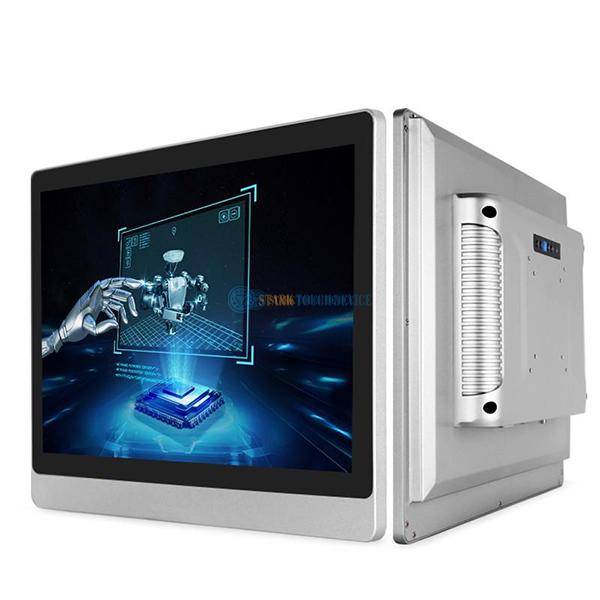Welcome STARK TOUCH DEVICE!
Solutions
Maintenance cycle of industrial control computer cooling fans
Industrial Control Computer Cooling Fan Maintenance Cycles
Industrial control computers (ICCs) operate in demanding environments where temperature regulation directly impacts system reliability. Cooling fans play a critical role in preventing thermal overload, but neglecting their maintenance can lead to premature failure, hardware damage, or unplanned downtime. This guide outlines practical maintenance cycles tailored to industrial settings, focusing on environmental factors and operational demands.

Understanding Fan Lifespan and Wear Factors
Cooling fan longevity varies based on design, usage patterns, and environmental conditions. Recognizing wear indicators helps schedule maintenance before critical failures occur.
Common Causes of Fan Degradation
Dust Accumulation: Industrial environments often contain airborne particles like metal shavings, fabric fibers, or chemical residues. These clog fan blades and bearings, reducing airflow and increasing strain.
Bearing Wear: Ball or sleeve bearings in fans degrade over time due to friction, especially in high-vibration settings. Symptoms include unusual noises (grinding, rattling) or erratic speeds.
Thermal Stress: Prolonged exposure to high temperatures weakens fan motor windings and lubricants, accelerating wear.
Example: A foundry’s ICC cooling fans failed within six months due to airborne metal dust clogging the bearings, despite being rated for 50,000 hours under standard conditions.
Predicting Failure Through Monitoring
Temperature Logs: Track CPU and motherboard temperatures over time. A steady increase despite stable workloads suggests reduced fan efficiency.
Acoustic Analysis: Use a stethoscope or sound meter to detect abnormal fan noises. A consistent hum is normal; clicks or scraping indicate bearing damage.
Practical Tip: Schedule acoustic checks monthly in high-dust environments and quarterly in cleaner settings.
Routine Cleaning and Inspection Cycles
Regular cleaning prevents dust buildup and extends fan life. The frequency depends on environmental severity and airflow design.
Recommended Cleaning Intervals
High-Dust Environments (e.g., textile mills, woodworking shops): Clean fans every 4–6 weeks.
Moderate-Dust Settings (e.g., general manufacturing floors): Clean every 3–4 months.
Clean Rooms or Enclosed Cabinets: Inspect every 6–12 months, focusing on filter replacement if applicable.
Case Study: A food processing plant reduced fan failures by 70% after switching from a 6-month to a 4-week cleaning cycle in areas with flour dust.
Step-by-Step Cleaning Process
Power Down: Shut down the ICC, unplug it, and ground yourself to avoid static discharge.
Access the Fan: Remove the chassis cover or access panel. Some fans are mounted directly on the motherboard; others are in separate enclosures.
Remove Debris:
Use compressed air to blow dust from the fan blades, grille, and surrounding heatsinks. Hold the can upright to prevent moisture.
For stubborn residue, lightly dampen a microfiber cloth with isopropyl alcohol (90%+) and wipe the blades. Avoid dripping liquid into the motor.
Lubricate Bearings (if applicable): Some fans have oil ports. Apply a single drop of lightweight machine oil (e.g., sewing machine oil) every 12–18 months. Do not over-lubricate.
Reassemble and Test: Ensure the fan spins freely by briefly powering on the ICC (with the case open) to observe airflow.
Warning: Never use vacuum cleaners near fans, as static buildup can damage components.
Advanced Maintenance for High-Stress Environments
Industries with extreme temperatures, vibrations, or corrosive substances require tailored maintenance to mitigate risks.
Thermal Management Adjustments
Redundant Fan Systems: In critical applications (e.g., power plants), install dual fans with automatic failover. Monitor both fans’ RPMs via BIOS or software tools.
Heat Sink Upgrades: If fans struggle to cool components, add passive heat sinks to distribute heat more effectively. Ensure they don’t block airflow paths.
Example: An oil refinery’s ICCs in a 60°C environment reduced fan load by 30% after installing larger heatsinks on the CPU and GPU.
Vibration and Corrosion Mitigation
Isolation Mounts: Use rubber grommets or anti-vibration pads to dampen vibrations from nearby machinery. This reduces stress on fan bearings and motor windings.
Corrosion-Resistant Coatings: Apply a non-conductive conformal coating to fan PCBs in chemically aggressive environments (e.g., paper mills). Focus on solder joints and exposed wires.
Practical Scenario: A chemical plant’s ICC fans lasted twice as long after technicians coated the motor housings with a rust-inhibiting spray.
Monitoring and Replacement Triggers
Proactive replacement prevents sudden failures. Establish criteria based on performance metrics rather than fixed timelines.
Performance Thresholds for Replacement
RPM Decline: If a fan’s speed drops below 70% of its rated RPM (check manufacturer specs), replace it even if noises are absent.
Temperature Rise: A 5°C increase in component temperatures under identical workloads suggests reduced airflow.
Age Milestones: Consider replacing fans older than 3–5 years in continuous-duty applications, as bearing wear becomes inevitable.
Advanced Test: Use an anemometer to measure airflow at the fan exhaust. Compare readings to baseline data from a new fan.
Handling Fan Failures
Hot Swapping: Some ICCs support fan replacement without shutting down. Verify motherboard compatibility and follow ESD precautions.
Spare Inventory: Keep identical fans on hand for quick replacements. Store them in anti-static bags in a cool, dry place.
Example: A automotive assembly line avoided 2 hours of downtime by swapping a failed fan in under 5 minutes using a pre-stocked spare.
By aligning maintenance cycles with environmental risks and performance data, industrial operators can maximize cooling fan reliability and minimize costly interruptions to automation processes.


